Understanding rocks and minerals is essential for exploring Earth’s composition and geological processes. This guide introduces key properties like color, hardness, and cleavage to aid identification.
1.1 Importance of Rock and Mineral Identification
Identifying rocks and minerals is crucial for understanding Earth’s structure, natural resources, and environmental processes. It aids geologists, engineers, and prospectors in locating materials vital for industries and construction. Additionally, it helps in studying Earth’s history, managing natural hazards, and preserving geological heritage. Accurate identification relies on properties like specific gravity, cleavage, and mohs hardness scale, making it essential for scientific and practical applications.
1.2 Overview of Key Characteristics and Properties
Identifying rocks and minerals involves analyzing key characteristics such as color, luster, hardness, cleavage, fracture, grain size, and specific gravity. Properties like streak, texture, and mineral habits also play a crucial role. These attributes help distinguish between similar specimens and provide insights into their composition and formation. Understanding these properties is fundamental for accurate identification and classification.
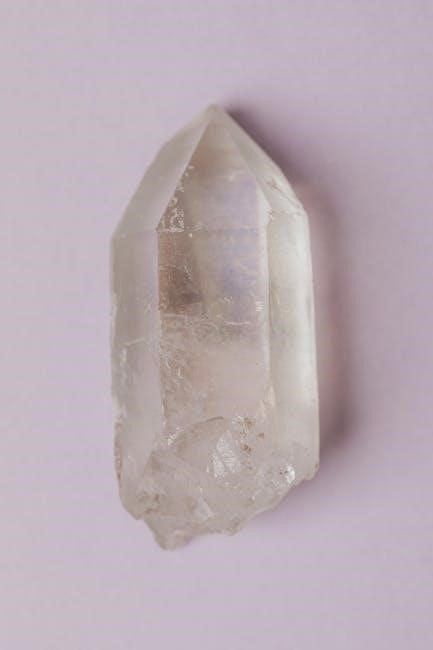
Key Characteristics for Identifying Rocks and Minerals
Key characteristics for identifying rocks and minerals include color, streak, luster, hardness, cleavage, fracture, grain size, and specific gravity. These properties help distinguish and classify specimens accurately.
2.1 Color, Streak, and Luster
Color, streak, and luster are primary characteristics for identifying minerals. Color is the mineral’s visible hue, though it can be misleading. Streak, the color when scratched on porcelain, is more consistent. Luster describes light reflection, such as metallic or glassy. These traits help distinguish minerals, with examples like galena’s metallic luster and quartz’s glassy appearance. They are essential for accurate identification and classification.
2.2 Hardness and Mohs Hardness Scale
Hardness measures a mineral’s resistance to scratching, ranked on the Mohs Hardness Scale from 1 (softest) to 10 (hardest). Talc is 1, while diamond is 10. This scale helps identify minerals by comparing their ability to scratch or be scratched by others. For example, quartz (7) scratches glass but is scratched by topaz (8). Knowing hardness aids in distinguishing similar-looking minerals effectively and accurately.
2.3 Cleavage, Fracture, and Grain Size
Cleavage refers to how minerals break along flat surfaces, while fracture describes irregular breaking patterns. Grain size indicates mineral crystal size, ranging from coarse to fine. These properties are crucial for identification, as minerals like halite exhibit perfect cleavage, while others like quartz show no cleavage but have a glassy fracture. Observing these traits helps distinguish between similar minerals effectively in the field and lab.
2.4 Specific Gravity and Density
Specific gravity, the ratio of a mineral’s density to water, helps identify minerals. For example, galena has a high specific gravity due to its lead content. Density measures mass per unit volume. These properties are vital for distinguishing minerals, as even subtle differences can indicate distinct species. Measuring specific gravity and density provides reliable data for accurate mineral identification in geological studies and fieldwork.
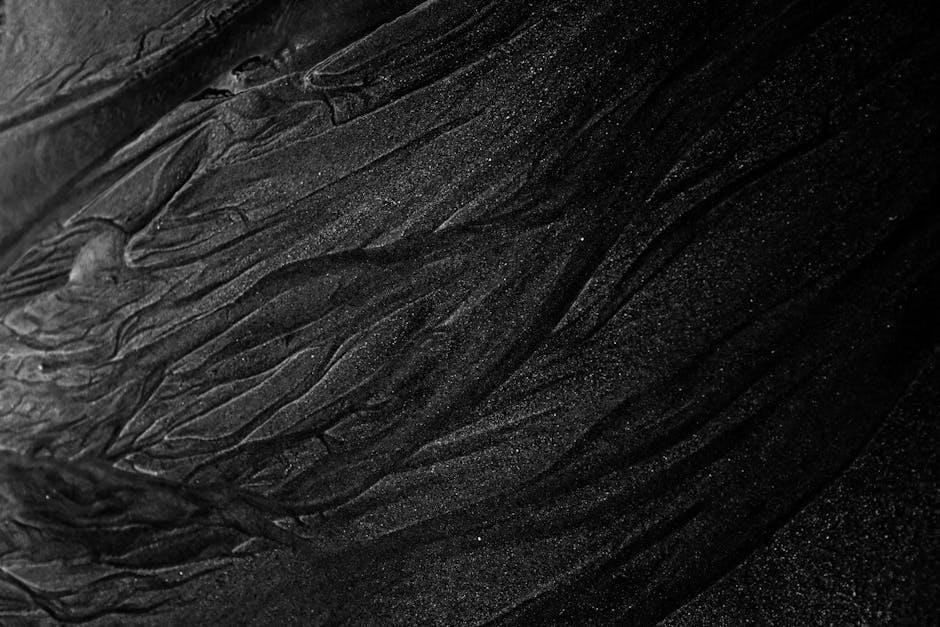
Classification of Rocks
Rocks are classified into three main types: igneous, sedimentary, and metamorphic. Each type forms through distinct geological processes, such as cooling magma, compression of sediments, or transformation under high pressure and temperature conditions.
3.1 Igneous Rocks: Origin and Types
Igneous rocks form from the cooling and solidification of magma or lava. They are categorized into intrusive (e.g., granite) and extrusive (e.g., basalt) types based on their texture and formation location; Intrusive rocks have coarse-grained structures due to slow cooling, while extrusive rocks are fine-grained, resulting from rapid cooling at the Earth’s surface.
3.2 Sedimentary Rocks: Formation and Characteristics
Sedimentary rocks form through the accumulation and compression of sediments, such as mineral particles or organic matter. They undergo lithification, transforming loose materials into coherent rocks. Common types include sandstone, shale, and limestone. These rocks often exhibit layering and may contain fossils, providing insights into Earth’s history. Their textures and compositions reflect the environments in which they formed, such as oceans or deserts.
3.3 Metamorphic Rocks: Transformation and Examples
Metamorphic rocks are formed when existing rocks are transformed by heat, pressure, and chemical processes. This alters their mineral composition and structure without melting. Examples include marble, slate, and quartzite. These rocks often display unique textures like foliation, seen in schist and gneiss. Their formation environments range from mountain-building events to contact metamorphism near magma bodies, creating diverse and complex geological features.
Mineral Identification Key
A systematic method for identifying minerals using properties like hardness, streak, and luster. Charts and keys help narrow possibilities, focusing on cleavage, habit, and specific gravity.
4.1 Common Minerals and Their Properties
Common minerals like quartz, feldspar, and mica exhibit distinct properties. Quartz, the most abundant mineral, has a hardness of 7 on the Mohs scale and a glassy luster. Feldspar, often white or pink, is soft and cleaves easily. Mica is known for its shiny, flaky appearance and perfect cleavage. Understanding these properties aids in accurate identification and classification.
4.2 Using a Mineral Identification Chart
A mineral identification chart simplifies the process by organizing properties like color, streak, and hardness. By comparing samples to the chart, users can systematically narrow down possibilities. Visual aids and diagrams enhance understanding, making it easier to identify minerals accurately. This tool is invaluable for both beginners and experienced enthusiasts, streamlining the identification process with clear, structured information.
Tools and Techniques for Identification
Essential tools for rock and mineral analysis include hand lenses, streak plates, and hardness kits. Advanced techniques like optical microscopy and chemical tests provide deeper insights.
5.1 Essential Tools for Rock and Mineral Analysis
The most critical tools for identifying rocks and minerals include a hand lens for detailed observations, a streak plate to test mineral color, and a hardness kit to determine resistance to scratching. A magnifying glass or geologist’s pick can also aid in examining textures and structures. These tools provide fundamental data for accurate identification and analysis.
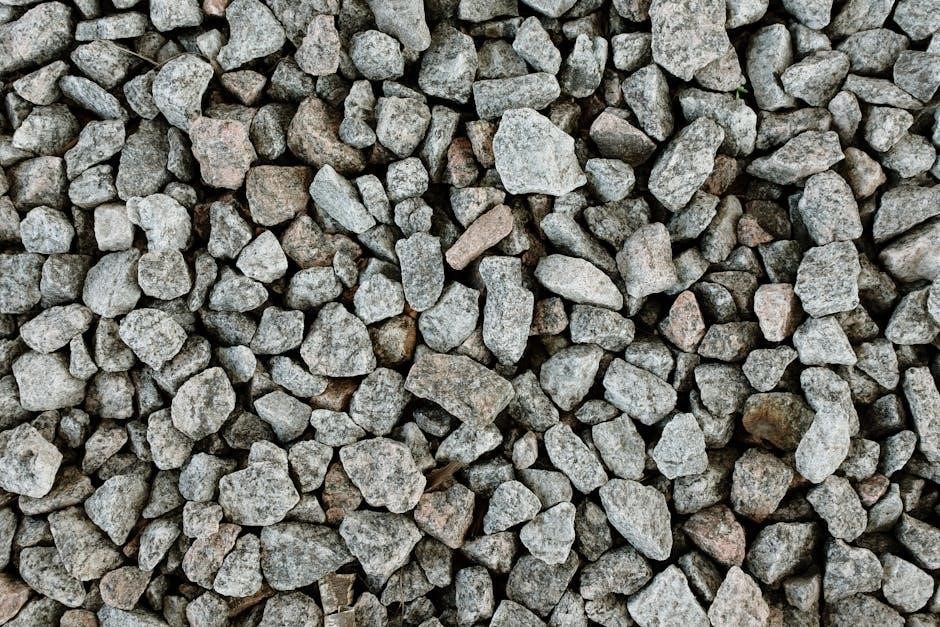
5.2 Advanced Techniques: Optical Microscopy and Chemical Tests
Optical microscopy reveals detailed mineral properties like crystal structure and birefringence, enhancing identification accuracy. Chemical tests, such as acid application to detect calcite or streak tests, provide complementary data. These advanced methods, combined with specific gravity measurements, offer deeper insights into mineral composition and properties, aiding precise classification and differentiation of complex rock and mineral samples effectively.
Common Rock and Mineral Types
Common rocks include igneous, sedimentary, and metamorphic types, while minerals like quartz, feldspar, and mica are widespread. Industrial minerals and metallic ores are also prevalent.
6.1 Metallic and Industrial Minerals
Metallic minerals like iron, copper, and gold are crucial for industries, while industrial minerals such as quartz, feldspar, and mica are essential for manufacturing; These minerals are identified by properties like luster, hardness, and specific gravity. They form the foundation of many modern technologies and industrial processes, making them vital for economic and technological advancement globally.
6.2 Aggregates and Rock Groups
Aggregates, such as sand and gravel, are essential in construction, while rock groups like igneous, sedimentary, and metamorphic are classified by formation. Aggregates are valued for strength and durability, while rock groups provide insights into Earth’s history. Understanding these materials is crucial for geological studies and practical applications in engineering and construction, ensuring sustainable use of natural resources for future development and infrastructure needs;
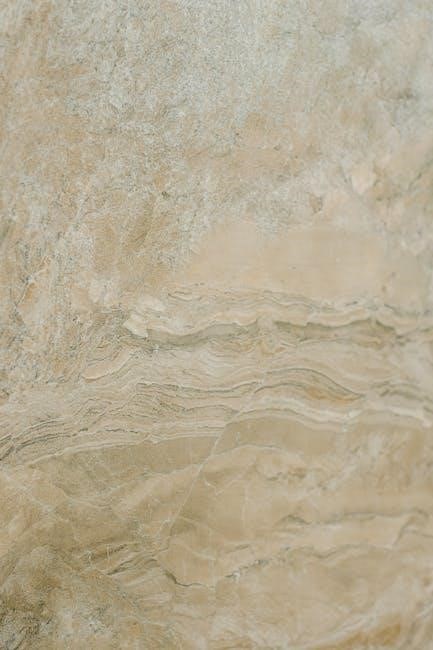
Where to Search for Rocks and Minerals
Rocks and minerals can be found in streams, hills, coastlines, and quarries. Explore natural habitats like mountains, valleys, and riverbanks for diverse geological treasures and formations.
7.1 Fieldwork Tips and Locations
When searching for rocks and minerals, explore diverse geological sites such as streams, mountains, and coastlines. Join local geology clubs or guided tours for expert guidance. Ensure you have permits and follow safety protocols. Streams often yield quartz or agate, while beaches may reveal fossils or shell fragments. Research areas with known mineral deposits for targeted searches and always respect environmental regulations.
7.2 Safety and Best Practices in Rockhounding
Always obtain necessary permits and ensure legal access to sites. Wear protective gear like helmets and gloves. Avoid damaging the environment by minimizing your footprint. Join experienced groups for guidance. Be mindful of hazardous terrain and weather conditions. Carry a first aid kit and stay informed about local regulations to ensure a safe and enjoyable rockhounding experience.
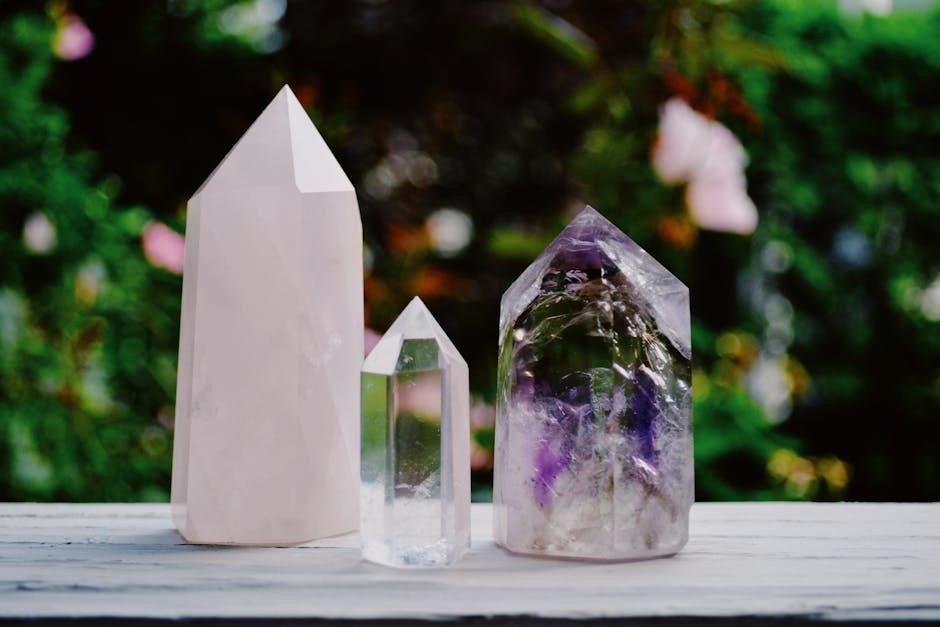
Preserving and Storing Rocks and Minerals
Properly clean and store your collection to maintain its quality. Use soft brushes and mild solutions for cleaning. Store specimens in labeled, padded boxes or display cases to prevent damage and ensure organization for future reference.
8.1 Cleaning and Conservation Methods
Cleaning and conserving rocks and minerals requires gentle techniques to preserve their integrity. Use soft-bristled brushes or mild detergents to remove dirt, avoiding harsh chemicals. For delicate specimens, soft cloths or distilled water are ideal. Dry thoroughly to prevent damage. Store in a cool, dry place, away from humidity and direct sunlight, using padded boxes or individual containers to protect fragile samples.
8.2 Organizing and Displaying Your Collection
Organize your rock and mineral collection by type, origin, or hardness for easy reference. Store specimens in labeled, individual containers or padded boxes to prevent damage. Display them in glass cases or on shelves to showcase their beauty. Consider categorizing by geological classification or color for visual appeal. Proper labeling ensures each specimen’s identity and history are preserved for future reference and study.
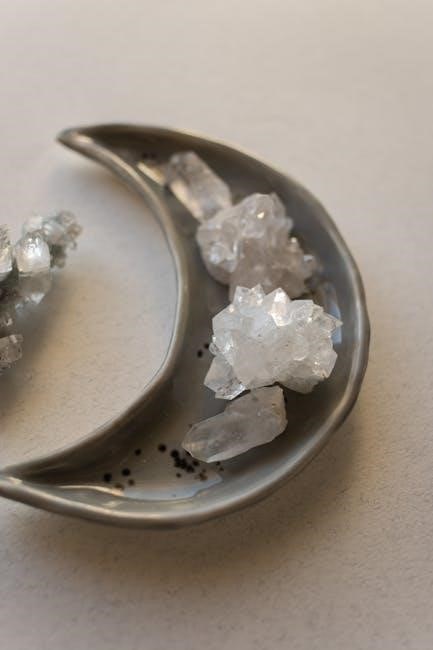
Resources for Further Learning
Explore recommended books, online guides, and forums for deeper insights into rock and mineral identification. Consult experts and join geology communities for specialized knowledge and support.
9.1 Recommended Books and Guides
Enhance your knowledge with field guides like Mineral Identification Key and comprehensive manuals on geological processes. These resources offer detailed insights into mineral properties, such as specific gravity and cleavage, with high-quality images and step-by-step identification methods. Perfect for students, professionals, and enthusiasts seeking in-depth understanding and practical application in rock and mineral study.
9.2 Online Communities and Expert Consultations
Engage with online forums and expert platforms for tailored advice and real-time discussions. Websites like Rockhounding Communities and Mineralogy Forums offer access to experienced geologists and enthusiasts. These resources provide interactive learning tools, such as mineral identification charts and video tutorials, to enhance your understanding of geological specimens and stay updated on the latest discoveries and techniques in the field.
Mastering rock and mineral identification opens doors to Earth’s geological wonders. Keep exploring, learning, and discovering the fascinating world of geology with curiosity and passion.
10.1 Final Tips for Successful Identification
For successful identification, always examine color, streak, luster, hardness, and cleavage. Use tools like a magnifying glass and hardness kit. Refer to mineral charts for quick comparisons. Practice regularly and consult expert resources when unsure. Keeping a journal of observations can enhance your learning and refinement in geological exploration.
10.2 Encouragement for Continuous Exploration
Embrace curiosity and wonder as you explore the fascinating world of rocks and minerals. Each specimen tells a unique story of Earth’s history. Join online forums, attend workshops, and collaborate with enthusiasts to deepen your knowledge. Keep a journal to track your discoveries and reflect on your journey. Remember, every rockhound’s adventure is a lifelong learning experience—stay curious and enjoy the journey!

